Deep in the rainforests of Papua New Guinea and eastern Australia, a captivating avian species captivates onlookers with its vibrant plumage and elaborate courtship displays. Meet the Flame Bowerbird (Sericulus ardens), a master of seduction and an artist in its own right. In this article, we will explore the fascinating world of Flame Bowerbirds, delving into their unique characteristics, intriguing mating rituals, and the significance of their remarkable bowers.
Flame Bowerbirds images
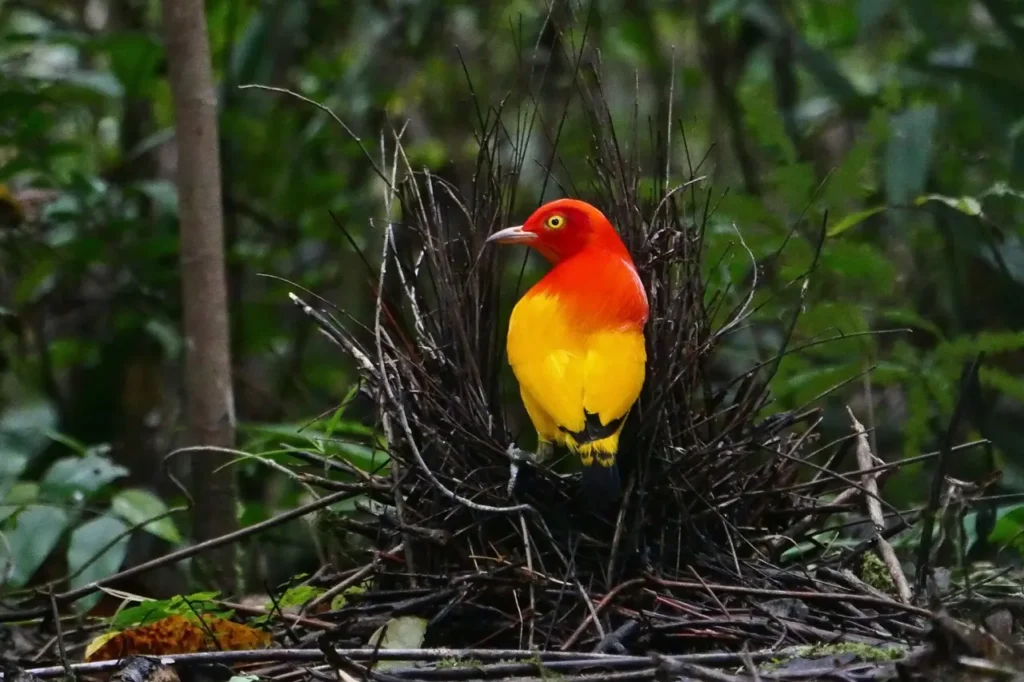
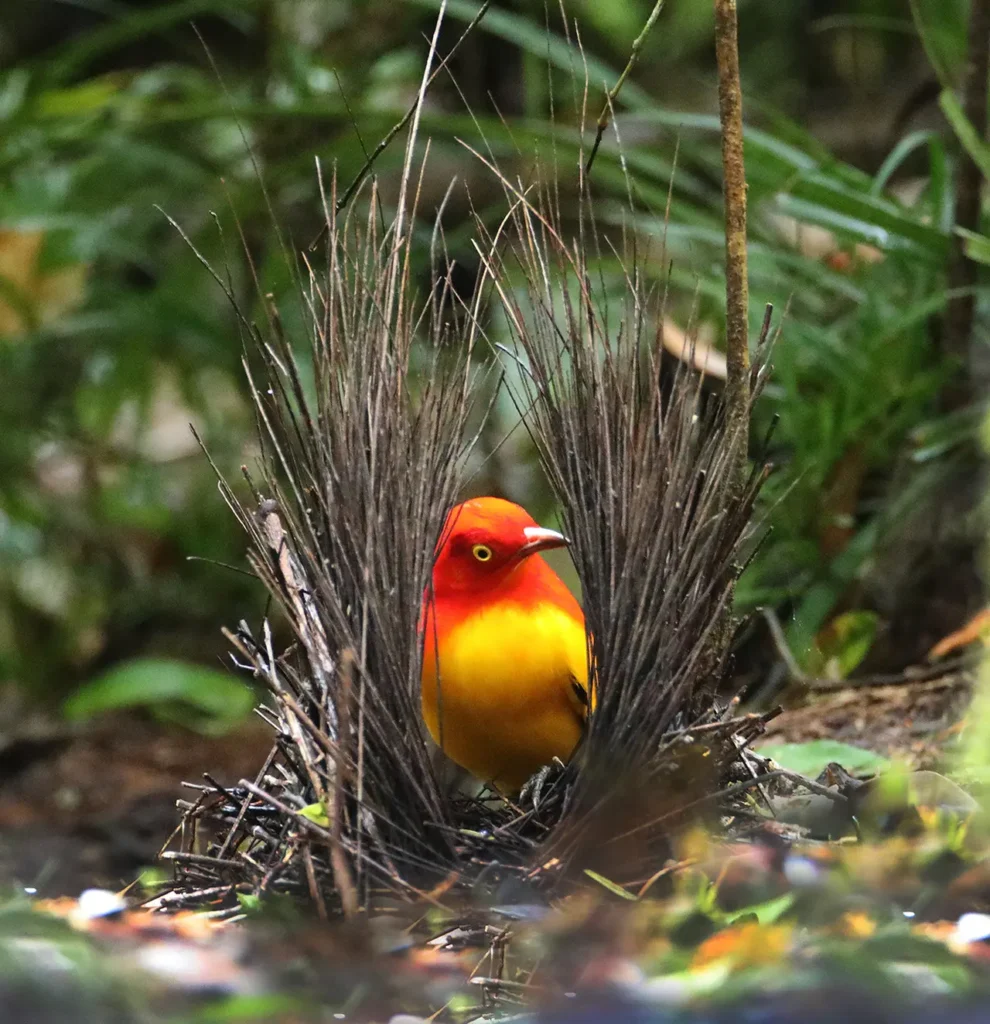
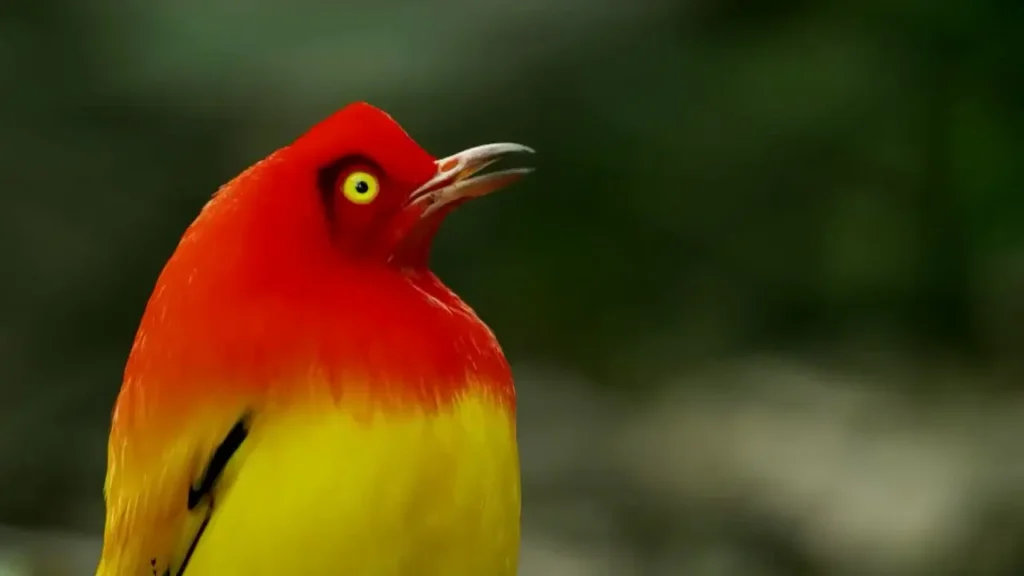
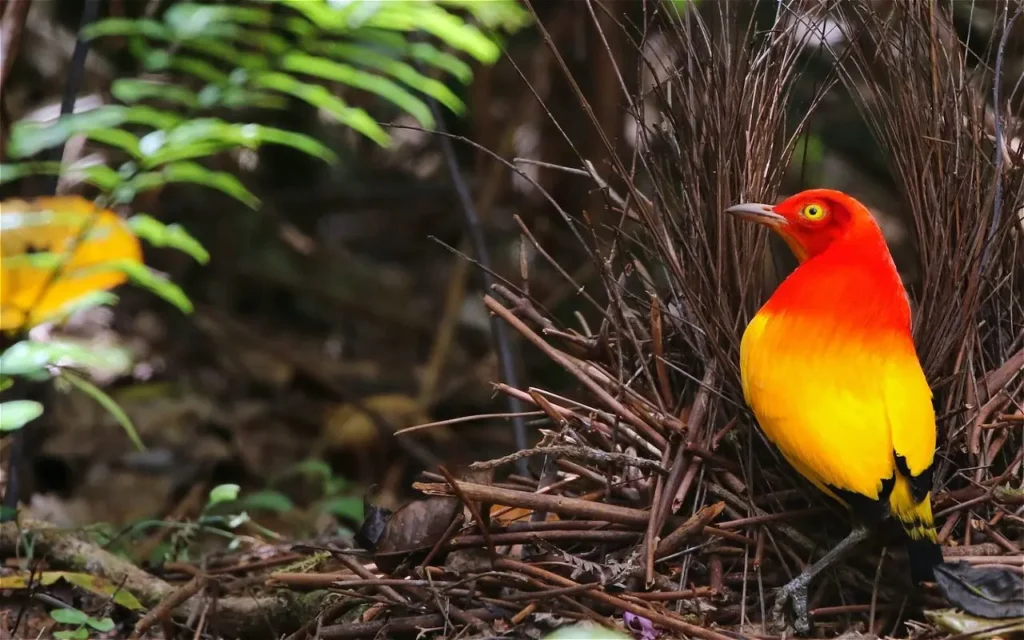
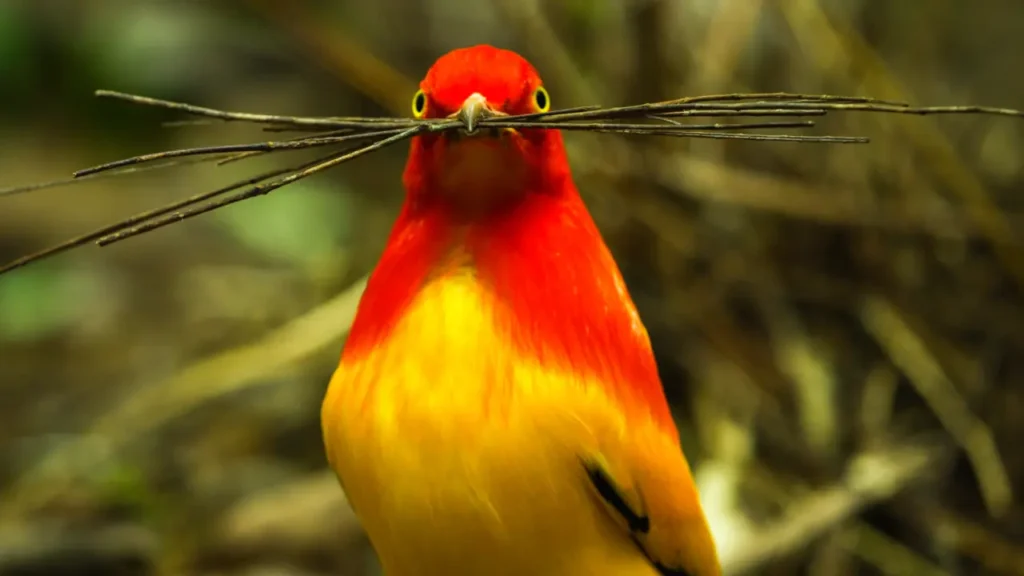
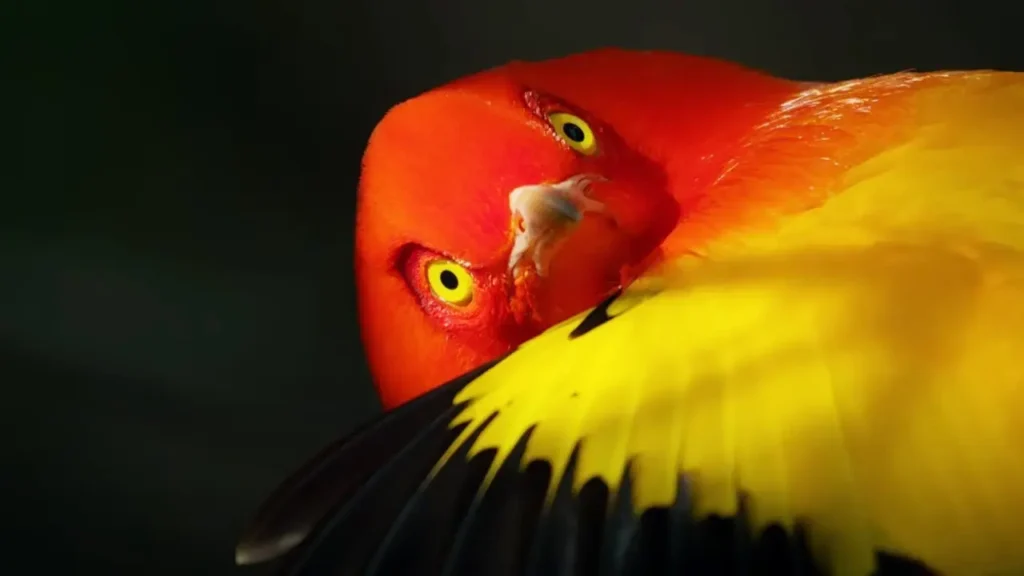
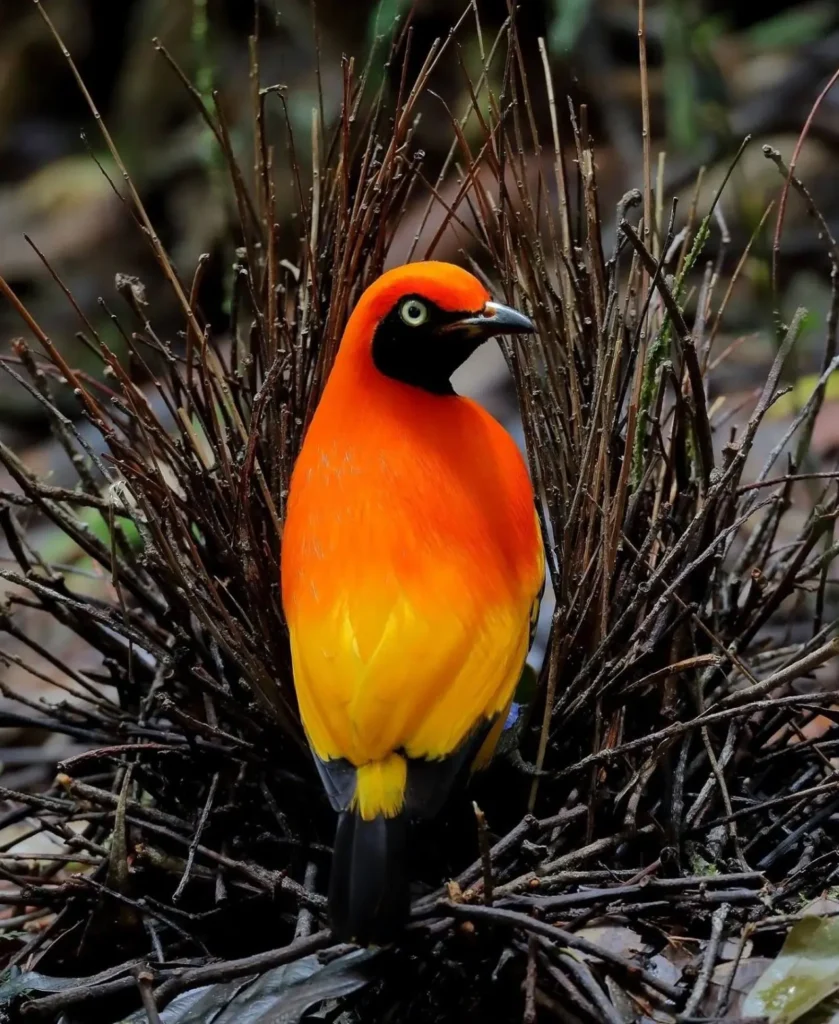
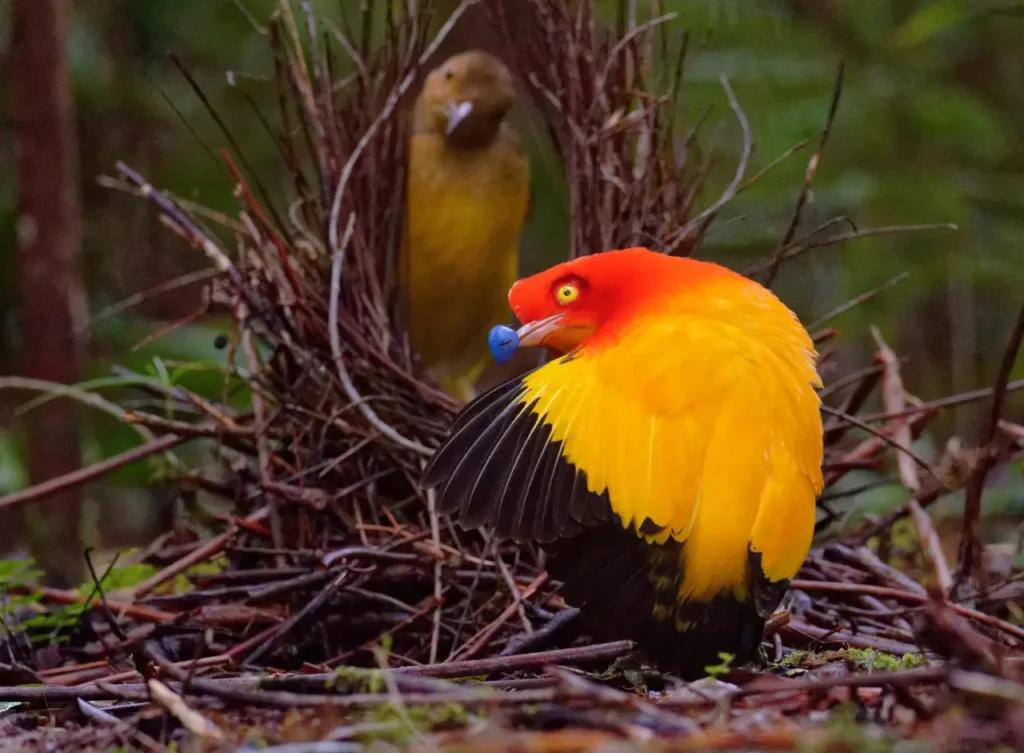
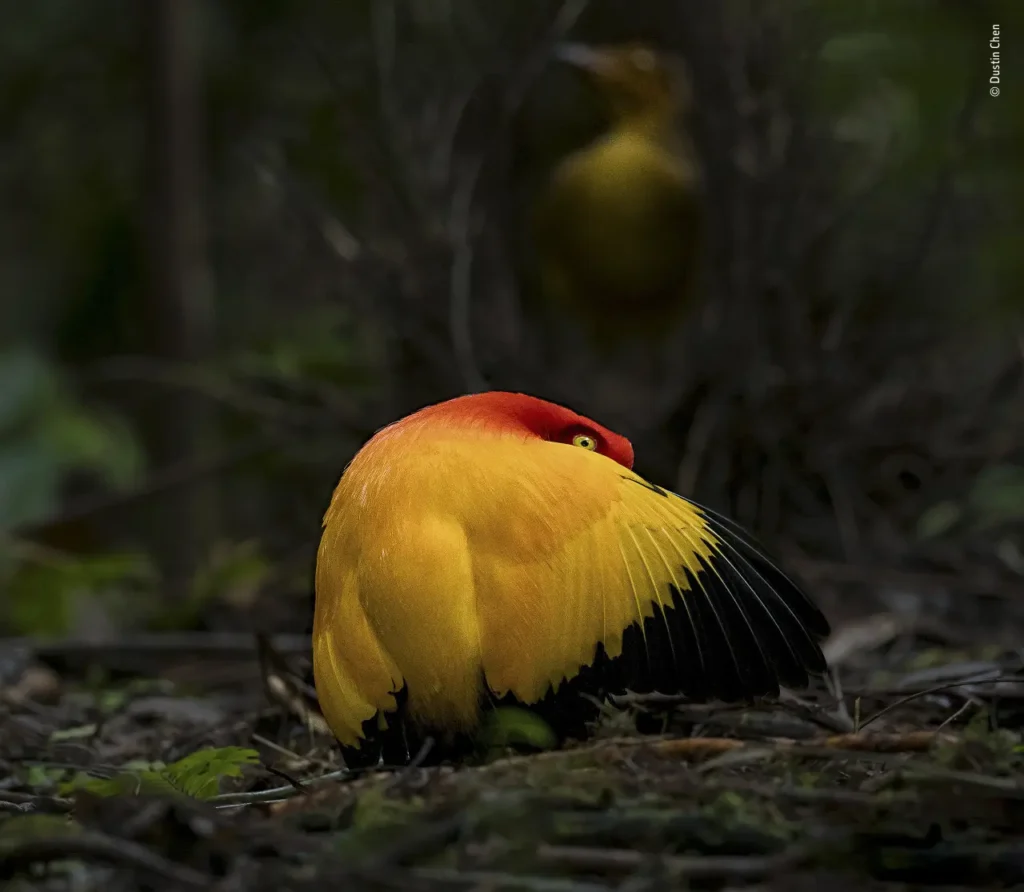
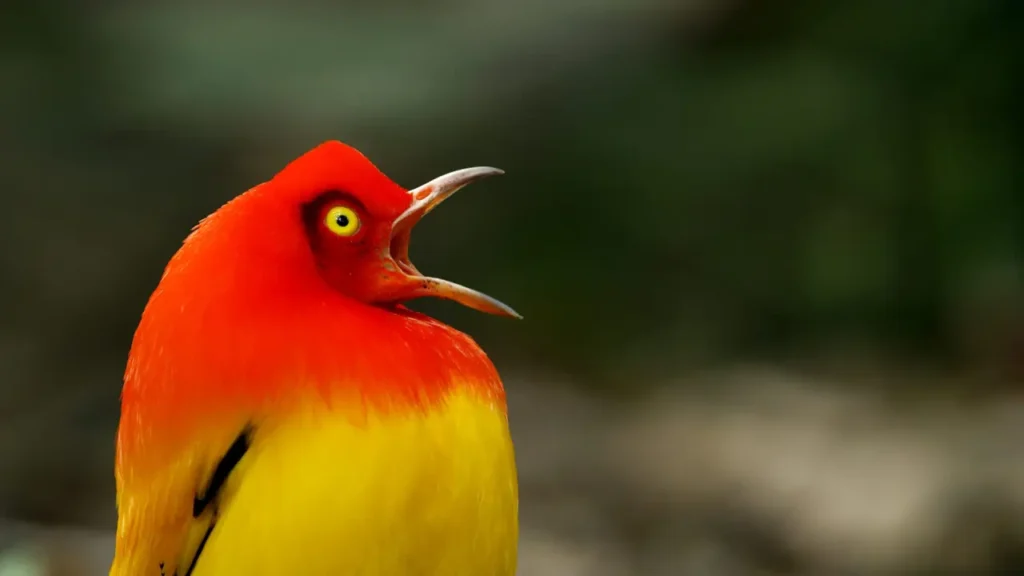
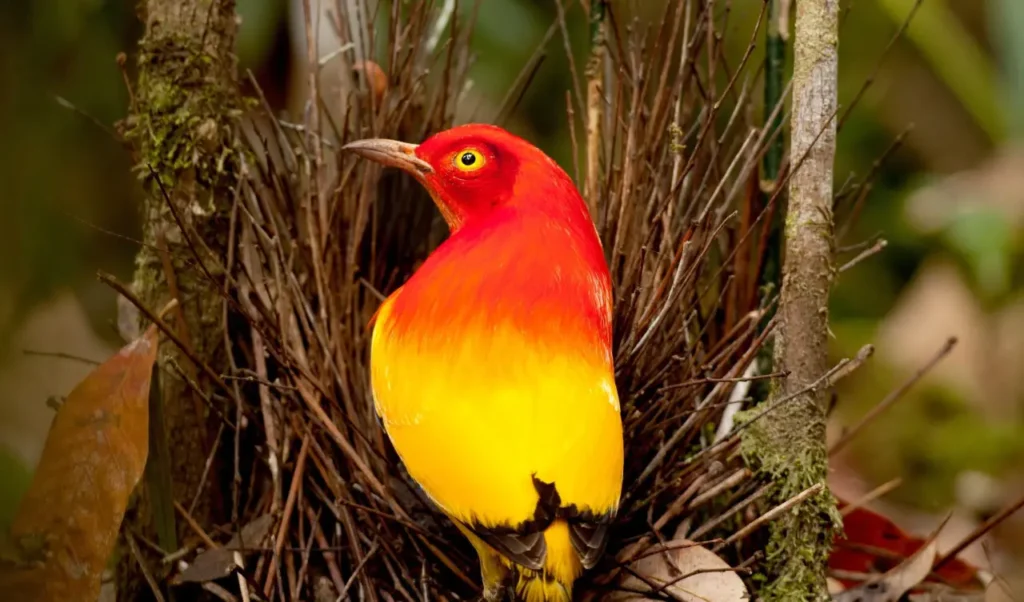
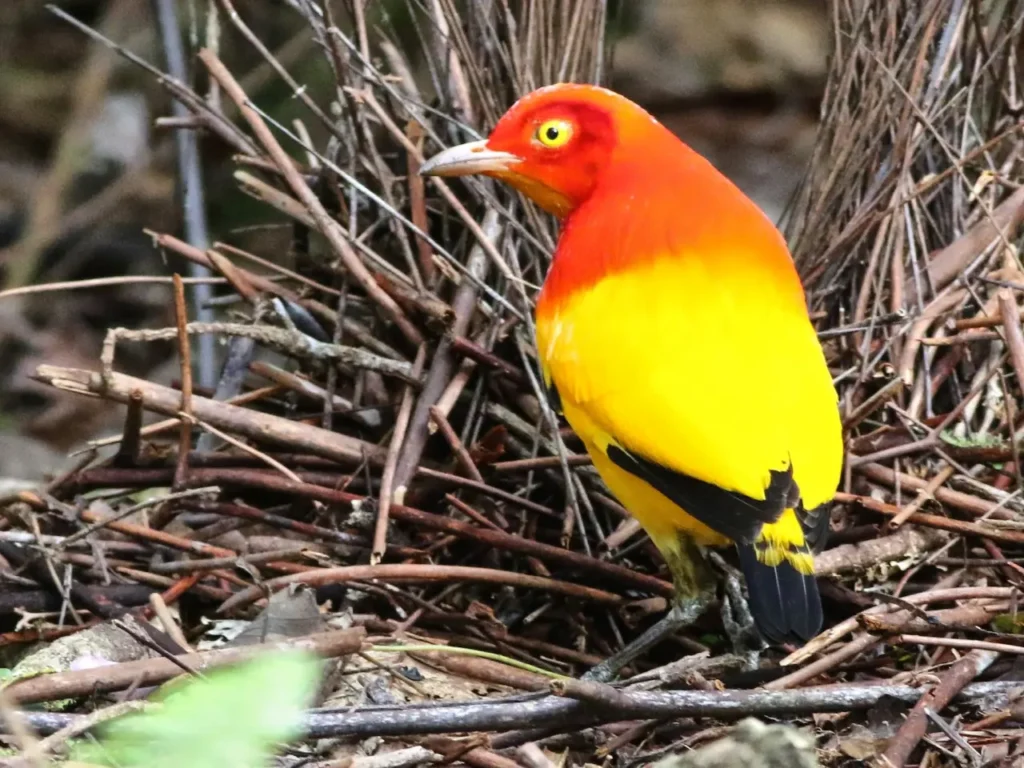
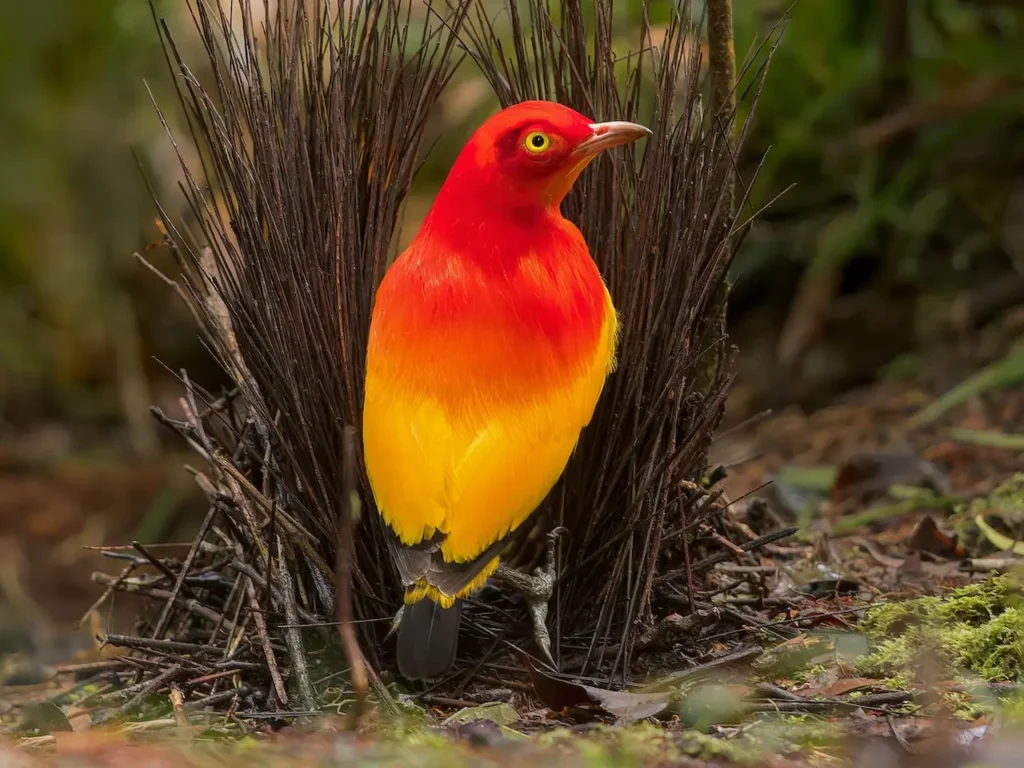
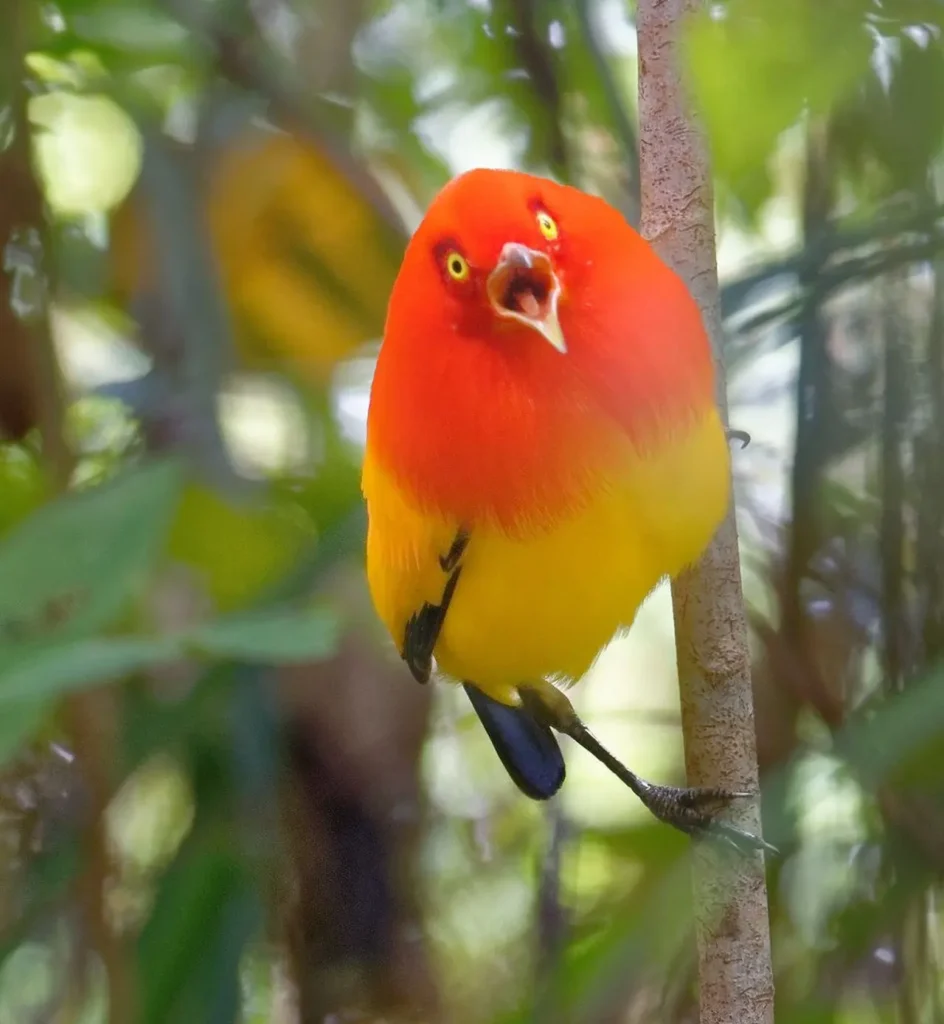
Appearance and Plumage
The Flame Bowerbird is a medium-sized bird with distinct sexual dimorphism. Males exhibit a fiery and extravagant plumage, displaying a brilliant orange-red coloration on their upper body, wings, and tail. Their deep violet-blue eyes and black beak provide a striking contrast to their vibrant feathers. In contrast, females are relatively subdued in appearance, sporting an olive-brown plumage that acts as a perfect camouflage amidst the foliage.
Courtship and Mating Behavior
The courtship rituals of Flame Bowerbirds are nothing short of mesmerizing. Males construct intricate and elaborate structures known as bowers, which serve as an arena for their courtship displays. The bowers consist of meticulously arranged twigs and grass, adorned with colorful objects such as flowers, berries, leaves, and even man-made items like feathers or bits of plastic. These artistic creations are carefully designed to attract the attention of potential mates.
Once the bower is complete, the male begins his elaborate courtship dance. With wings spread wide, he hops, leaps, and sways, showcasing his vibrant plumage and intricate movements. The male also vocalizes, producing a series of complex and melodious calls to further entice the female. The courtship display, combined with the visually stunning bower, creates a captivating spectacle that plays a crucial role in mate selection.
Nesting and Parenting
After successful courtship, the female Flame Bowerbird takes charge of nest construction and incubation. She builds a small, cup-shaped nest made of twigs, leaves, and moss, often hidden within the dense foliage of the rainforest. Once the eggs are laid, she diligently incubates them while the male moves on to seek other potential mates.
The female is solely responsible for raising the chicks, providing them with nourishment and protection until they fledge and become independent. This division of parental duties is unique among bird species and highlights the fascinating dynamics of Flame Bowerbird reproductive behavior.
Conservation and Threats
The Flame Bowerbird, like many other species, faces several challenges to its survival. Deforestation, habitat loss, and illegal trapping for the pet trade are significant threats that impact their populations. Efforts to protect the rainforest habitats and promote sustainable land use practices are vital for ensuring the continued existence of these remarkable birds.
Ecological Significance
Flame Bowerbirds play an essential role in their ecosystems. As fruit-eating birds, they contribute to seed dispersal, aiding in the regeneration and diversity of plant species. Additionally, their unique behaviors and elaborate courtship displays make them valuable indicators of ecosystem health and biodiversity.
The Flame Bowerbird, with its vibrant plumage, artistic bowers, and captivating courtship rituals, stands as a testament to the wonders of nature’s ingenuity. Its existence and survival depend on the conservation of its rainforest habitat and the appreciation of its unique behaviors. By valuing and protecting the Flame Bowerbird, we honor the diversity of life and the incredible beauty that thrives in the heart of the rainforests.








